72 Diptera – Nematocera
Nematocera
The suborder Nematocera (“nemato” = “thread”, “cera” = “antenna”) is an extremely important subgroup for humans. Many of the most common hematophages are in this suborder, and it includes many important vectors of human and animal diseases. The entire suborder is characterized by having antennae with five or more segments.
Tipulidae
The first family of Nematocera that we look at is Tipulidae, or crane flies. While many people describe them as “giant mosquitoes”, they are not hematophagous. Most of the adults are quite fragile, and frequently lose legs while being collected or preserved. Larvae are herbivorous or detritivores. Some species have aquatic larvae that are sacvengers. Other larvae feed on plant roots, and can be considered pests of lawns, golf courses, and plant nurseries.
Adult tend to have elongate, obvious halteres, and a typical “gangly”, long-legged appearance. There are a few related families that we do not cover in the lab, but Tipulidae is usually distinguishable by a V-shaped suture on the dorsum of the thorax.
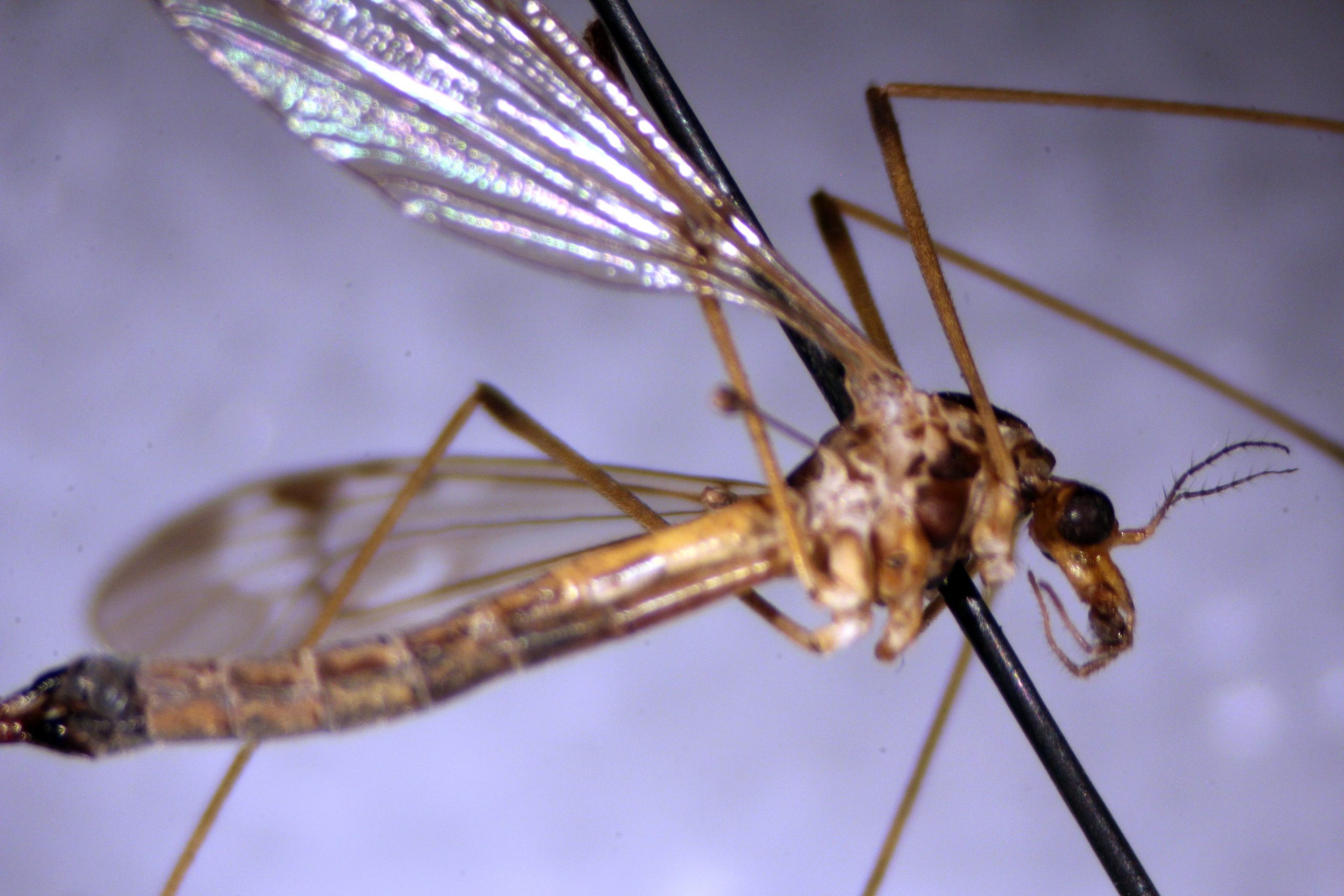
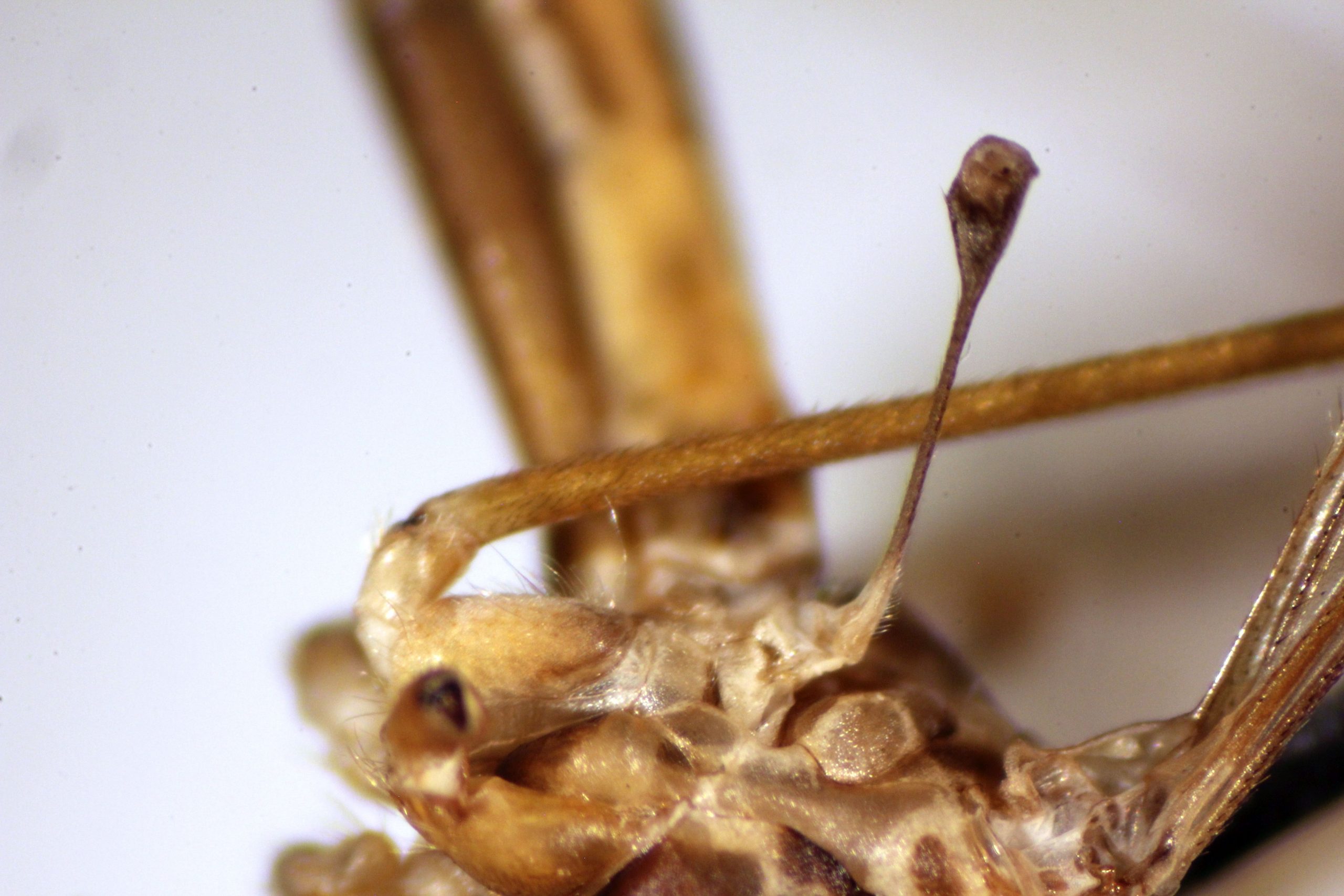
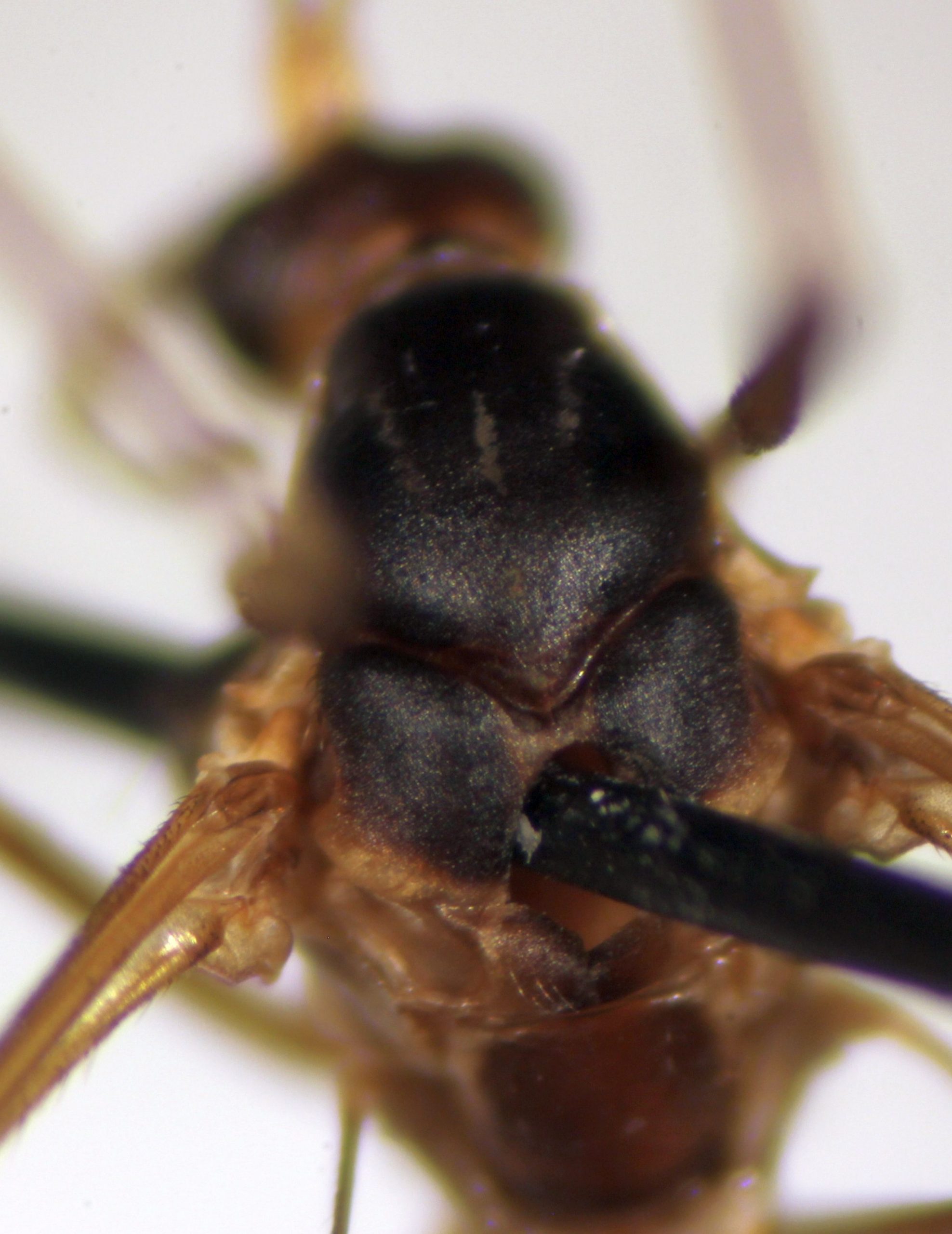
Bibionidae
Bibionidae, the March flies, includes about 650-700 species. They are scavengers, and tend to occur in large swarms following synchronous emergence. Some species spend almost their entire adult lives copulating, leading to their other common name, “lovebugs”. They can be sexually dimorphic.
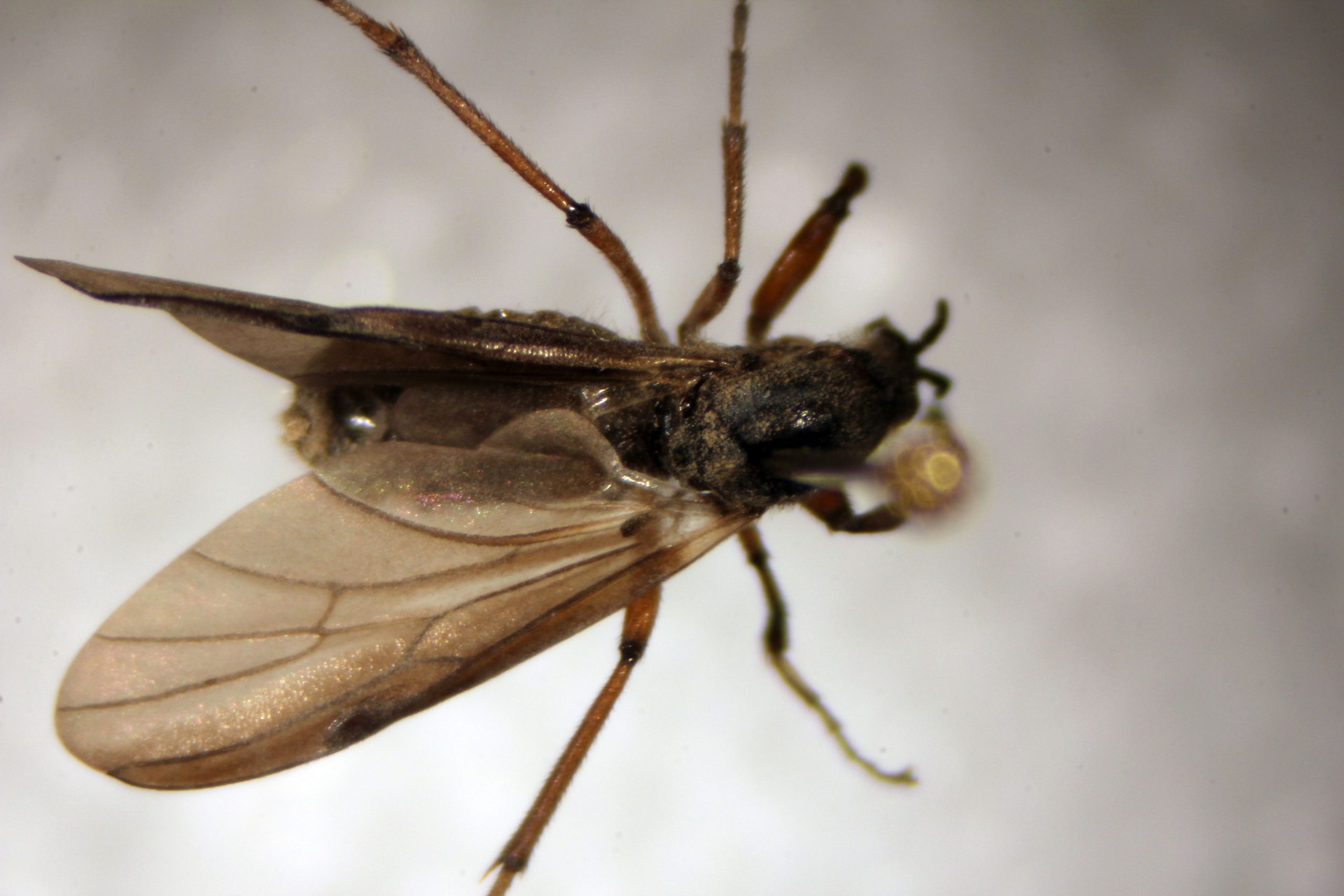
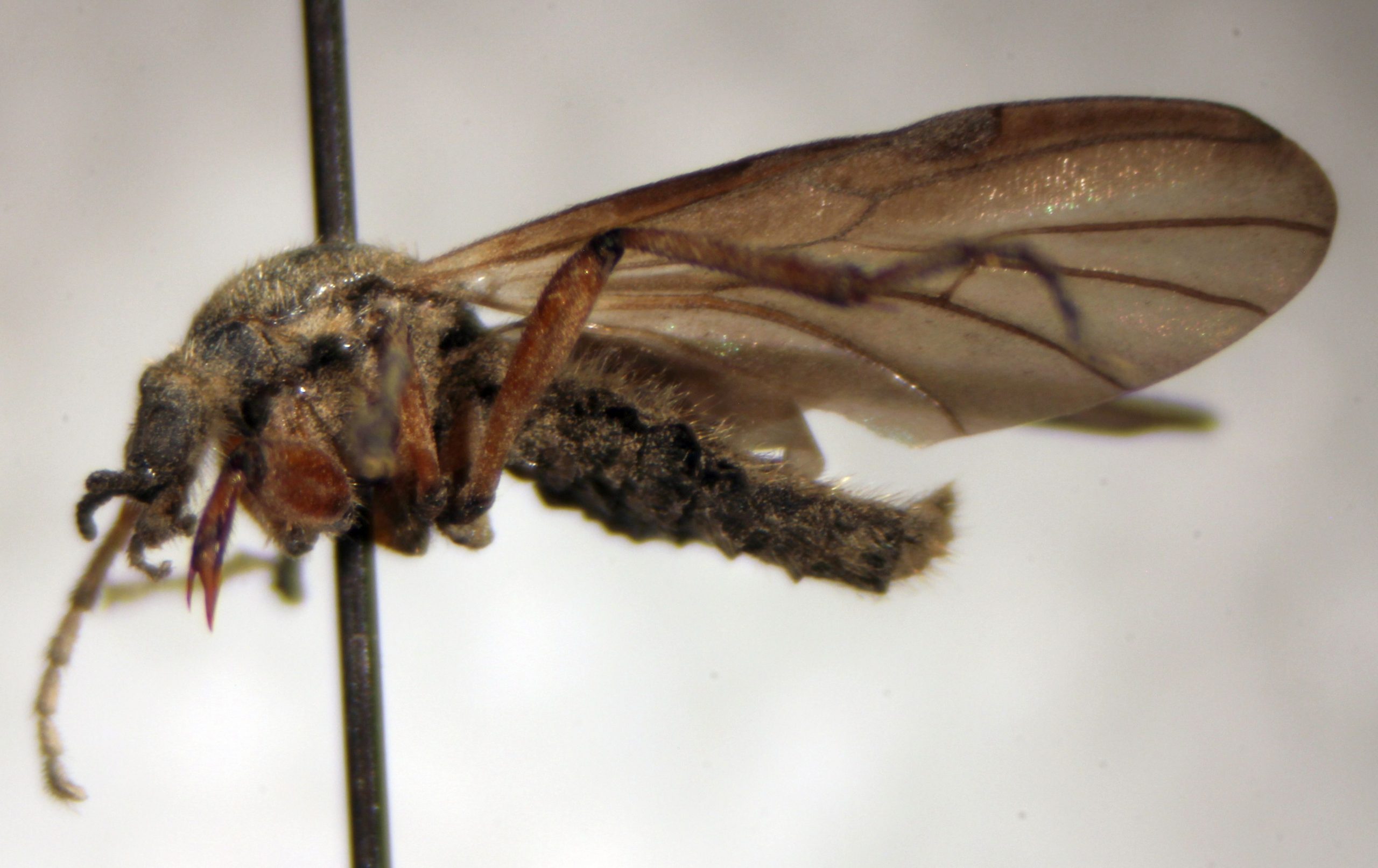
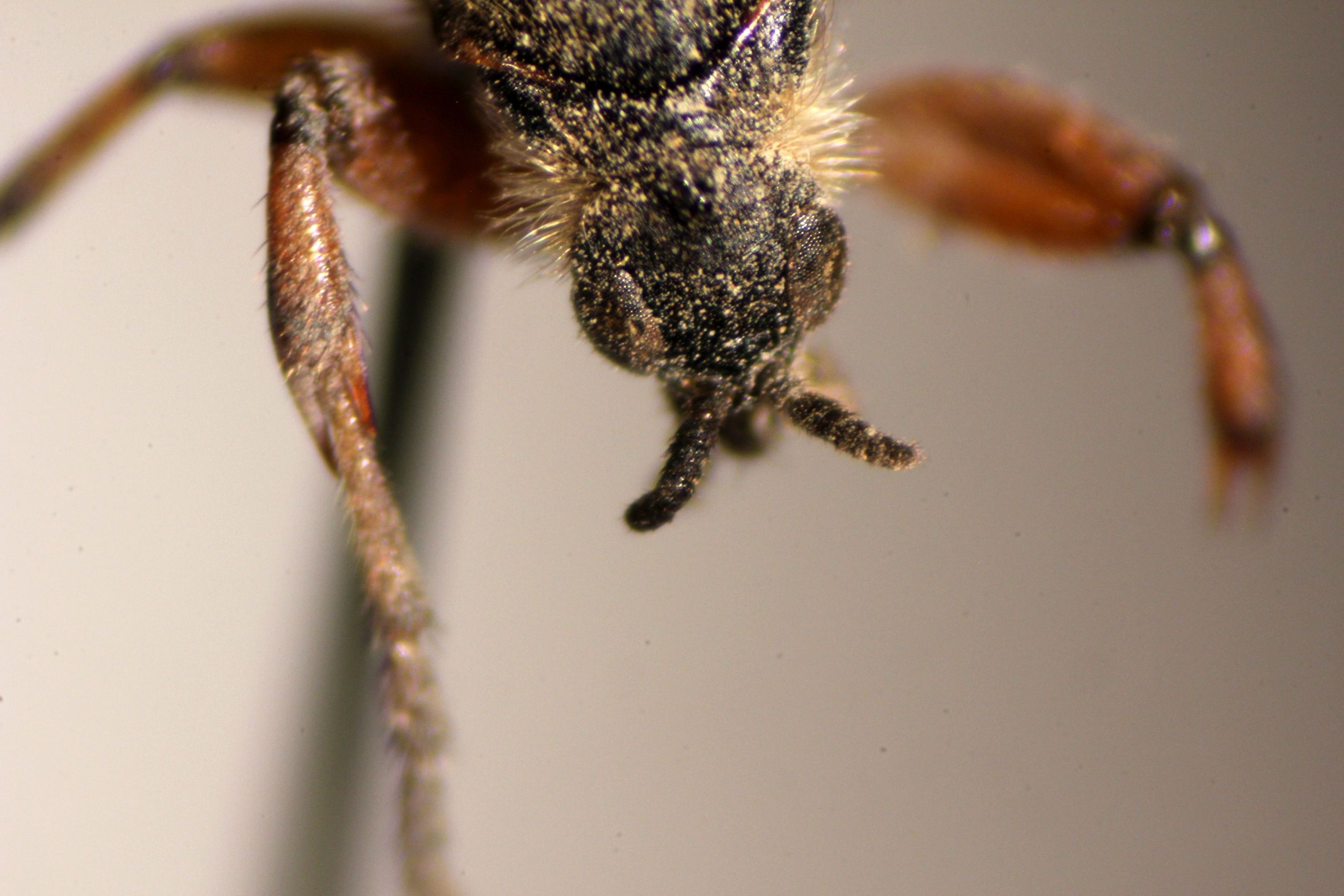
Sciaridae
Sciaridae are the dark-winged fungus gnats. As the common name suggests, they are scavengers. They are common nuisance insects in house plants, greenhouses and nurseries.
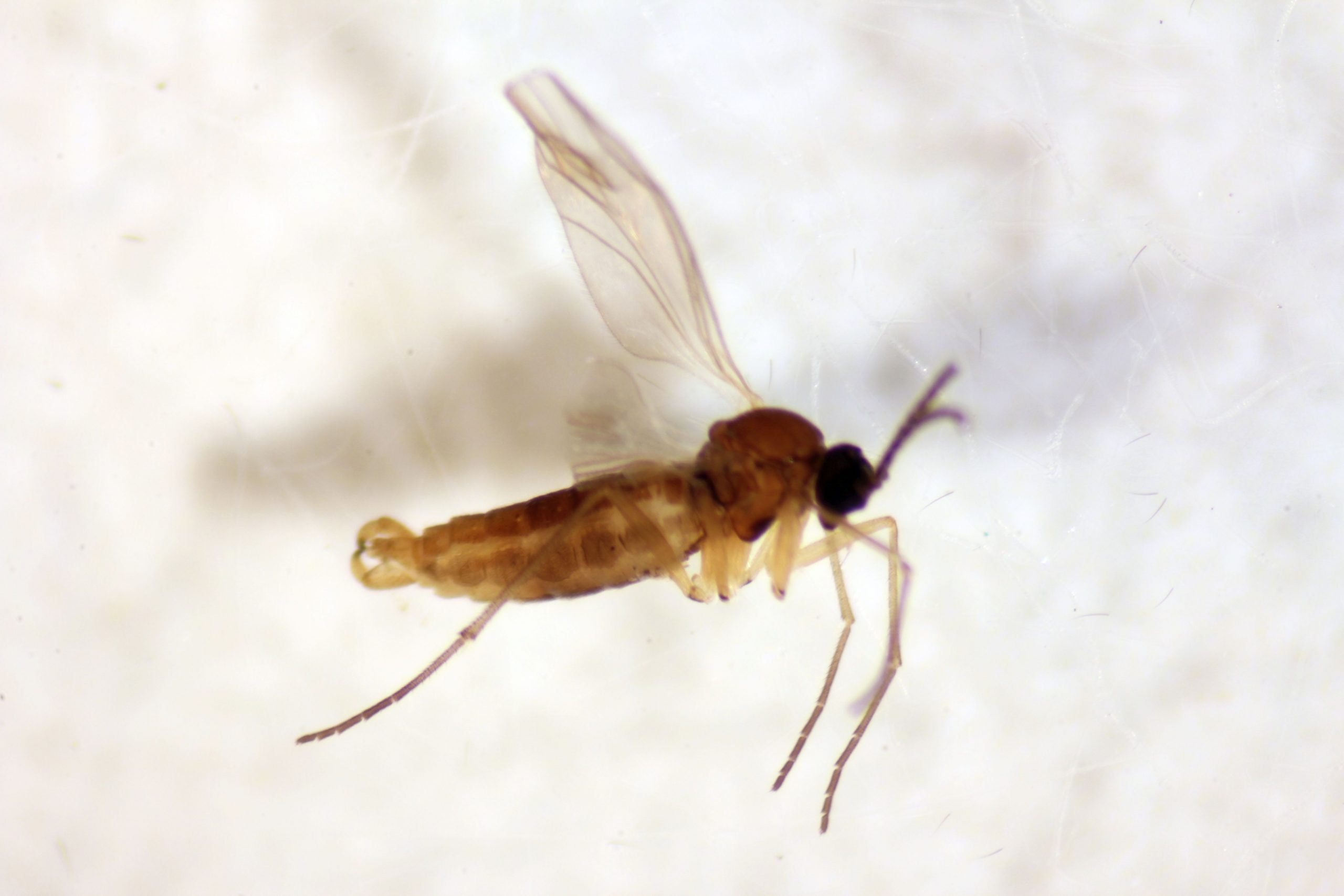
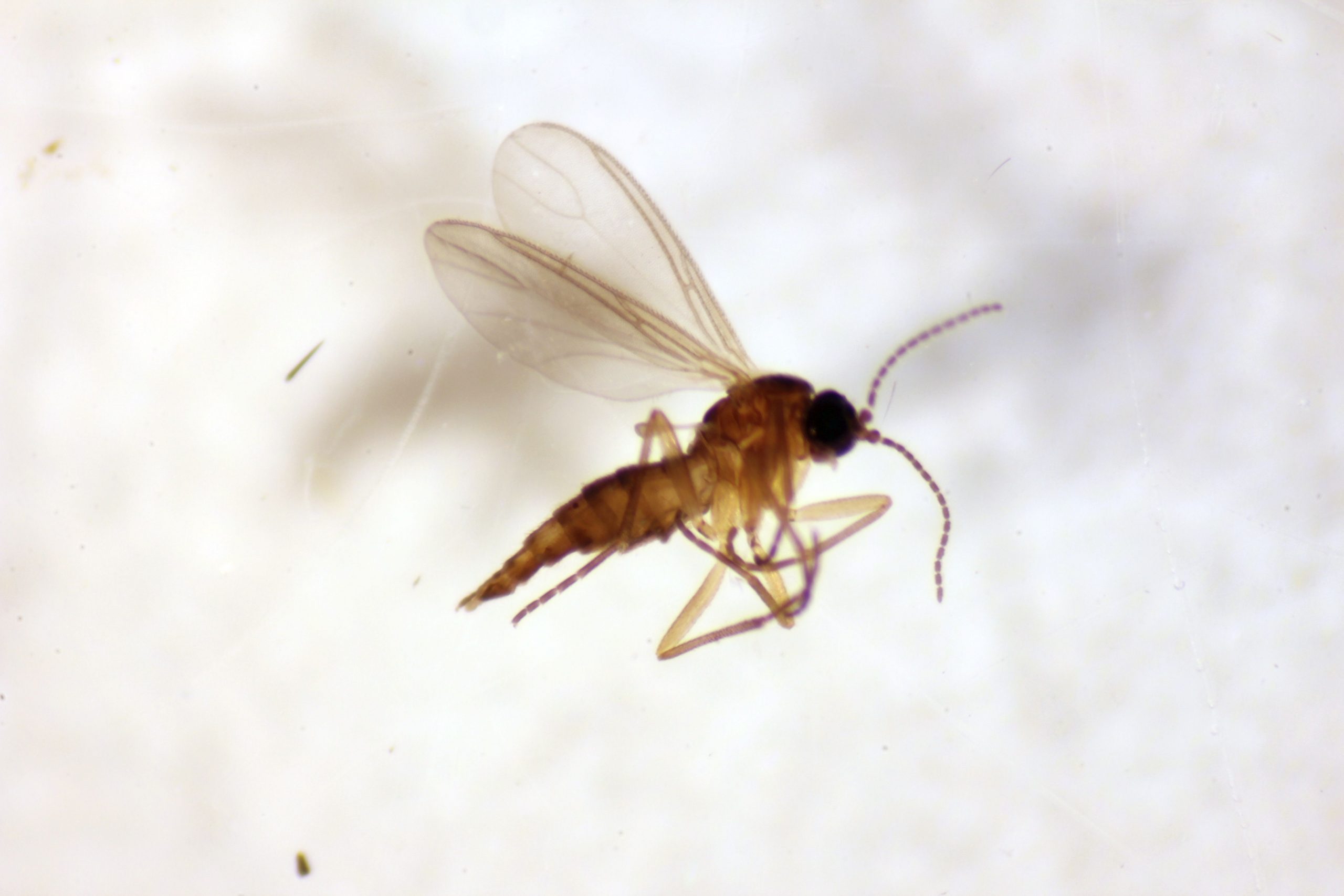
Cecidomyiidae
Cecidomyiidae, the gall midges, includes several economically important pest species. Feeding of the larvae on plant parts induces a physiological response in the plant, which produces a gall or swelling. The Douglas-fir cone gall midge, Contarinia oregonensis, can be quite destructive in tree seed orchards, where it induces a gall that fuses the seed to the cone scale, making it difficult to extract the seed for planting. These are very small flies, and there is no well-preserved representative in the UNBC collections.
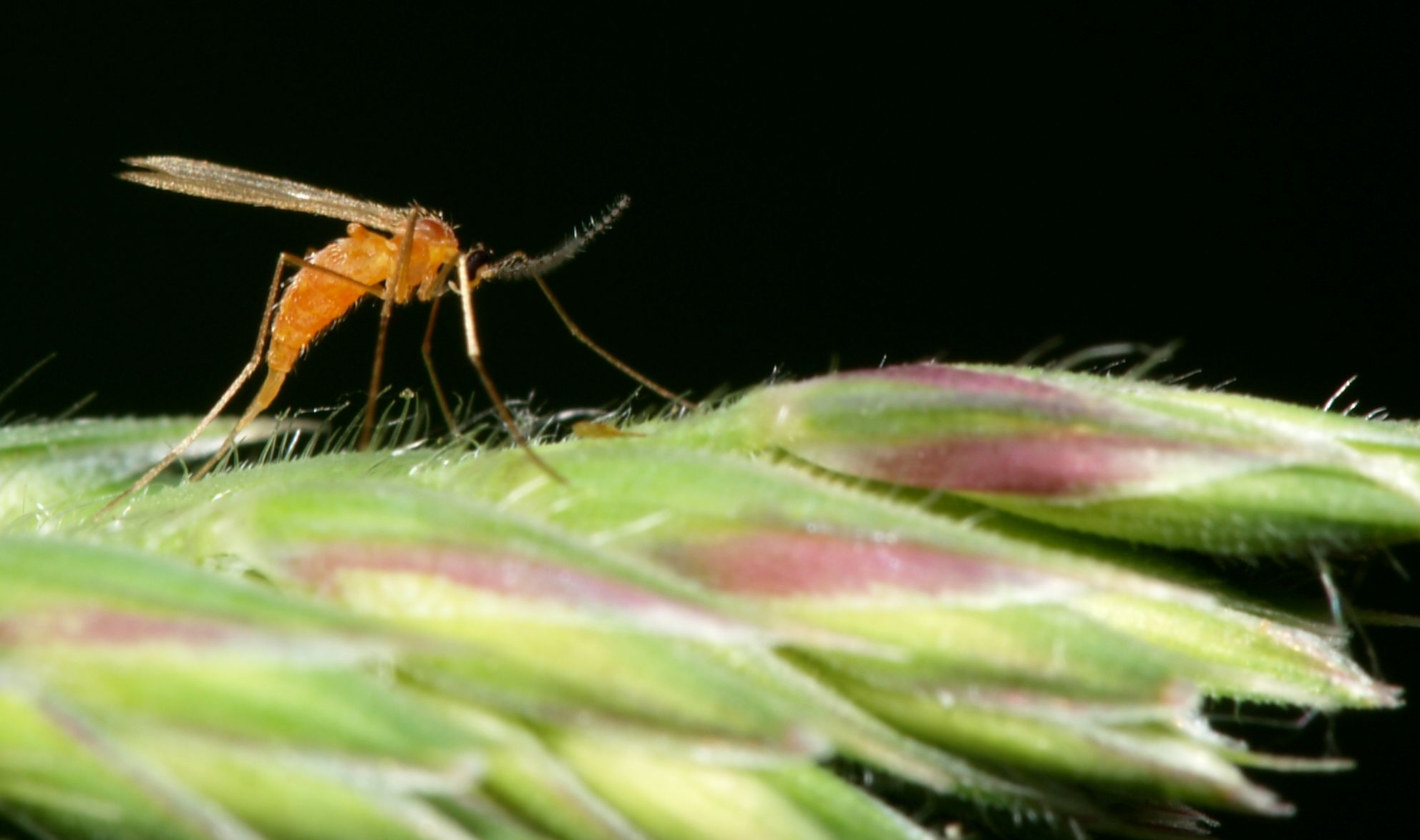
Sarefo, CC BY-SA 4.0 <https://creativecommons.org/licenses/by-sa/4.0>, via Wikimedia Commons
Chaoboridae
Chaoboridae, the phantom midges, are common in and near freshwater ecosystems. The larvae are pelagic and clear-bodied, except for two air sacs at the front and rear that help the larva maintain neutral buoyancy in water. Larvae are predatory, and use raptorial antennae to grab small prey such as mosquito larvae. The adults resemble mosquitoes, but lack the proboscis, even on females.
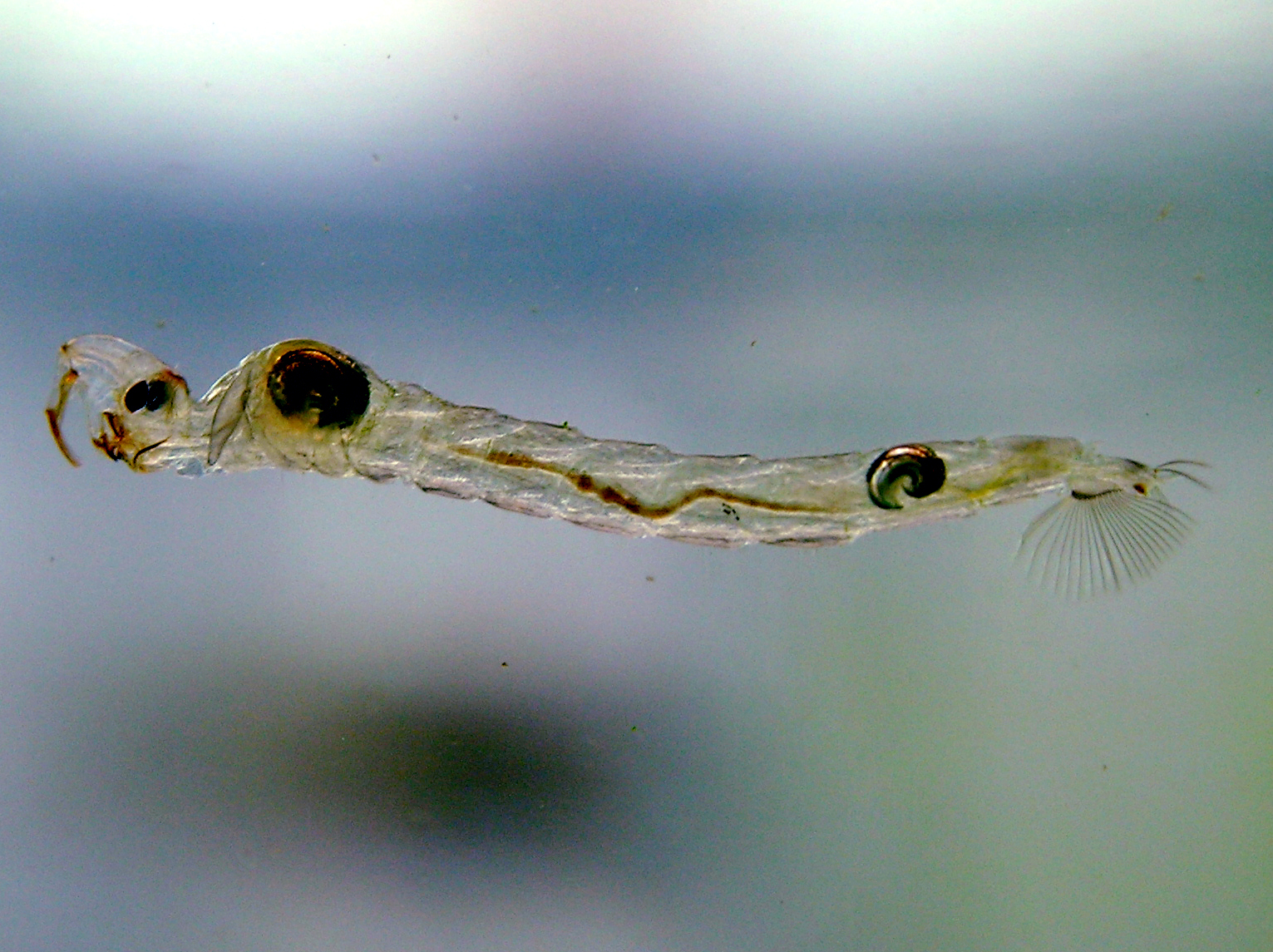
Piet Spaans, CC BY-SA 2.5 <https://creativecommons.org/licenses/by-sa/2.5>, via Wikimedia Commons
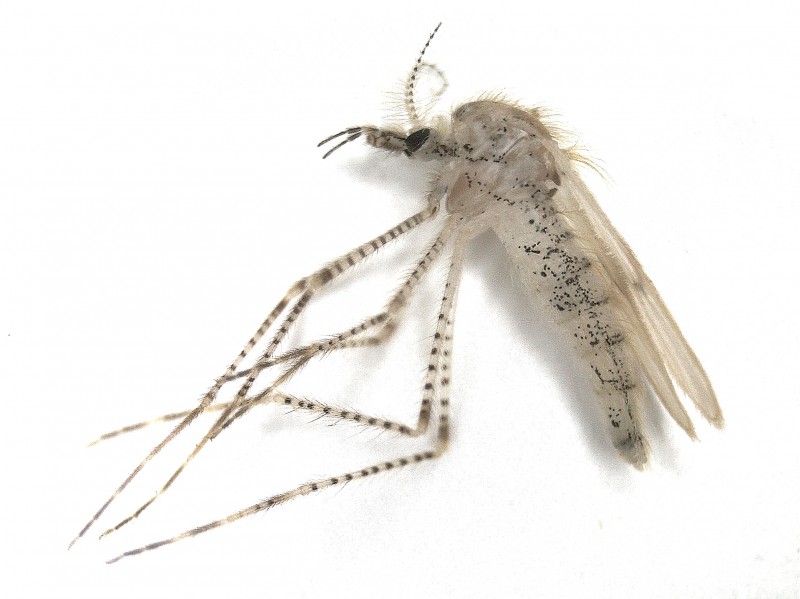
This image is created by user B. Schoenmakers at waarneming.nl, a source of nature observations in the Netherlands., CC BY 3.0 <https://creativecommons.org/licenses/by/3.0>, via Wikimedia Commons
Culicidae
If you live almost anywhere in Canada, you should be familiar with Culicidae, the mosquitoes. Adults have piercing-sucking mouthparts, and many females are obligate or facultative blood-feeders. Vertebrate blood is needed as a protein source to enable females to produce well-provisioned eggs. Species that are facultative blood-feeders are mostly found in the Arctic, and can produce some eggs even without a blood meal. They produce more eggs, with more resources per egg, if they are blood-fed. Some species will feed on multiple hosts, and even on multiple host species. These mosquitoes are the species that are important vectors of various blood-borne pathogens, like malaria. Adult males feed mostly on nectar, and can be important pollinators in some areas.
Mosquitoes lay their eggs in stationary water. Larvae can develop in a surprisingly small amount of water: rain water puddles, evn hoof prints can be important breeding grounds. Some mosquitoes breed in specialized habitats, like water that accumulates in tree cavities. These species have also often adapted to use anthropogenic sources of pooled water, with abandoned tires being a favoured habitat. Larvae feed mostly on algae and detritus, but a few species are predatory.
Five genera are represented in northern British Columbia. Anopheles spp. feed in a characteristic manner, with their heads down towards the skin of the host, and the abdomen pointing upwards. Their larvae are also distinctive, having a very short siphon, the breathing tube off the tip of the abdomen where the spiracles are located, and resting horizontally at the surface of the water to breathe. Culiseta spp. are large mosquitoes active later in the summer, while Culex spp. tend to emerge very late into the fall. Several Culex spp. feed on birds as well as humans, and are likely sources for potential West Nile virus transmission. Aedes spp. (now divided into two genera, Aedes and Ochlerotatus) are the main species that we notice around Prince George in late May and June. There are quite a few species, some of which breed in temporary snow-melt pools and emerge as adults almost as soon as the snow is thawed. Others in this genus are called floodwater mosquitoes; these lay their eggs in the mud on the margins of rivers and ponds. They hatch when the freshet starts and the water levels rise, then quickly complete development. The last genus, Mansonia (=Coquillettidia), is represented here by the cattail mosquito. The larval siphon is modified into a saw-like structure that is used to tap into the air pockets in cattail roots. The larva then remains at the bottom of the pond, feeding on algae and detritus and breathing via the cattail roots. It has no need to expose itself to predation by surfacing periodically to breathe.
The larva pictured below with an extra-long siphon is a Culex territans specimen; adults feed on frogs and other amphibians.
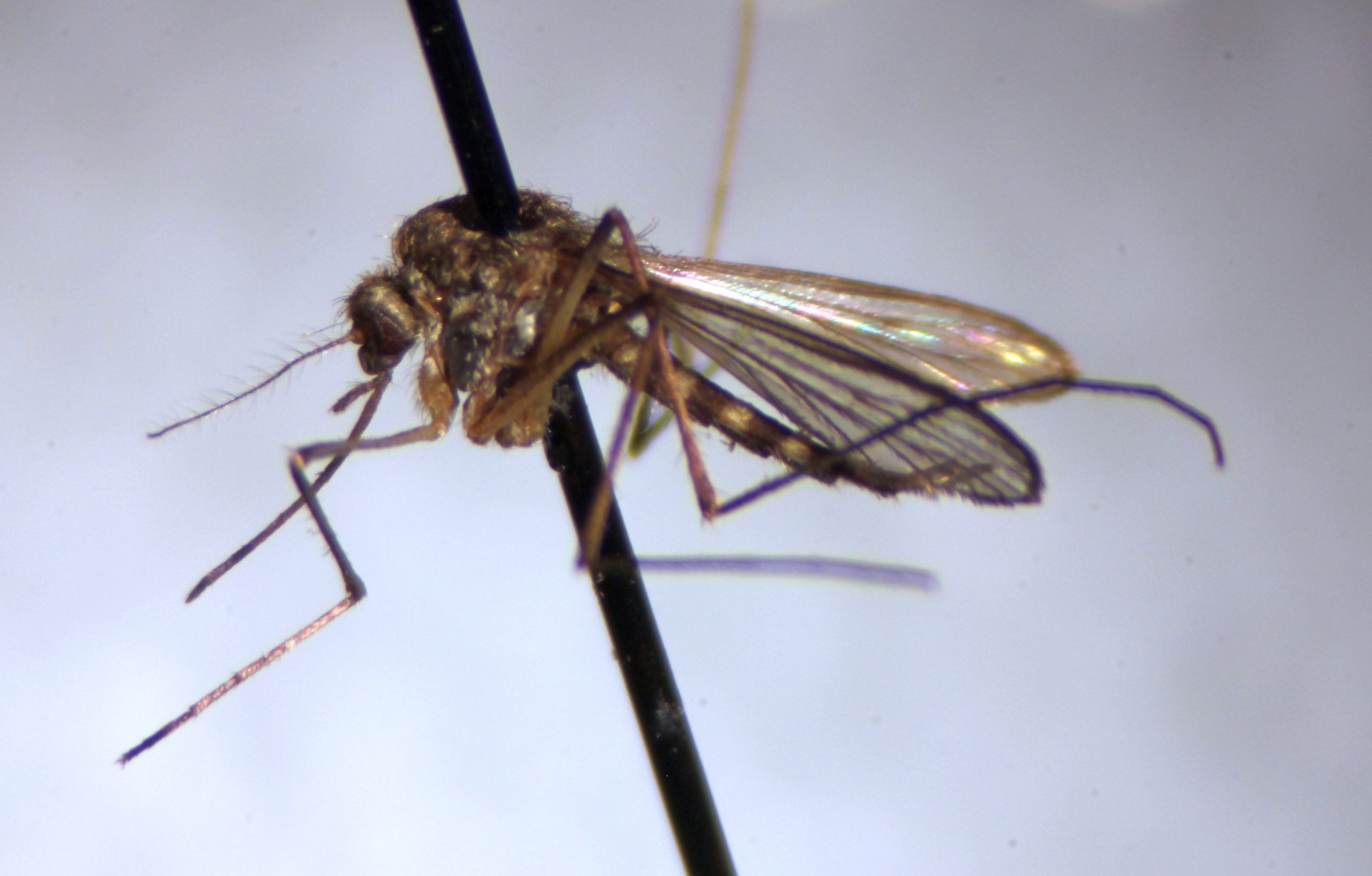
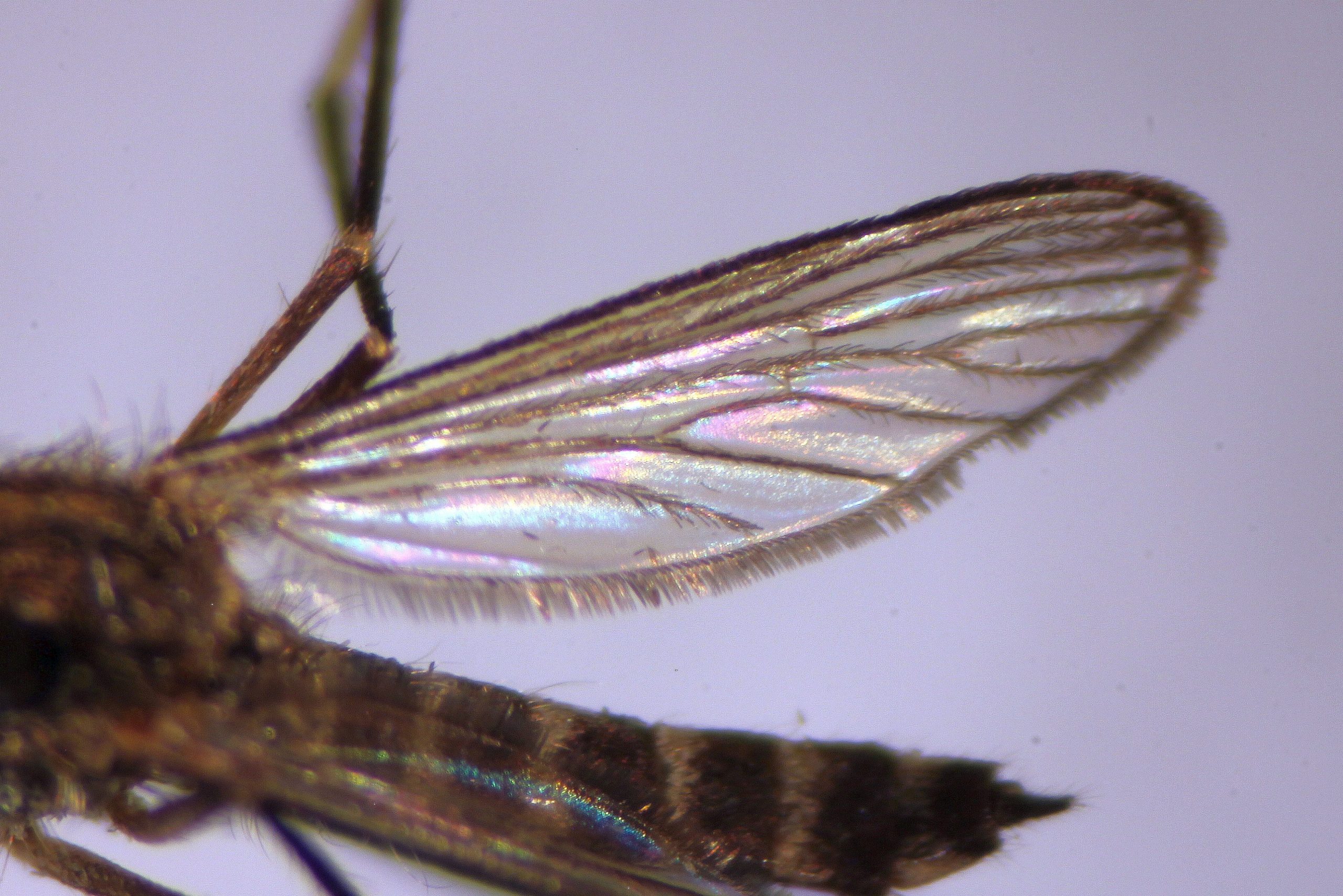
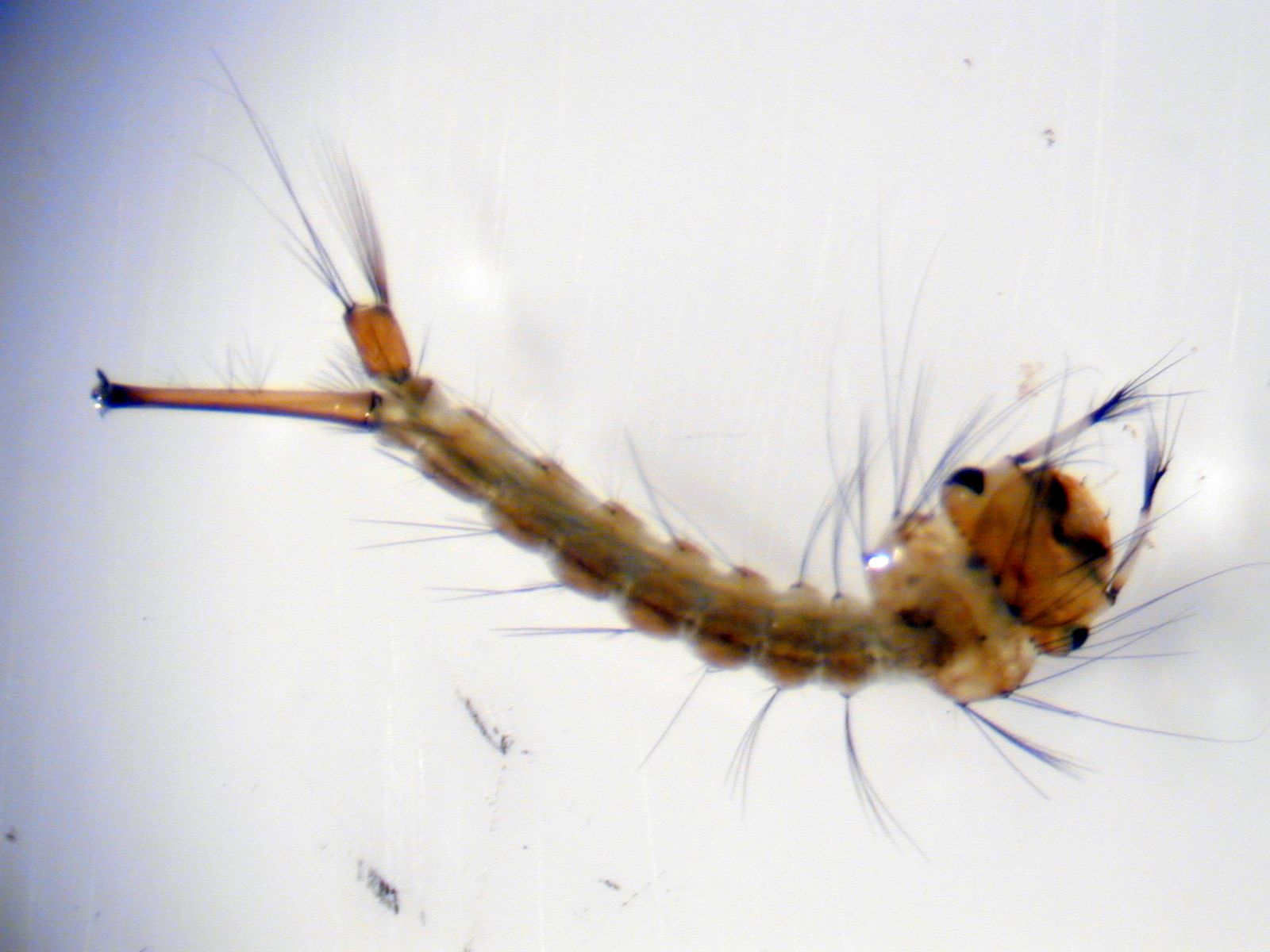
Simuliidae
Simuliidae are the black flies or buffalo gnats. Members of this family are also hematophagous as adults and are important disease vectors. They use a technique known as pool feeding. Adults use their saw-like mouthparts to tear a small hole in the vertabrate host’s skin and access the capillary blood flow underneath. As the blood pools on the surface of the wound they suck it up. They also have anticoagulants and anaesthetics in their saliva that keep the blood from clotting and the host from swatting. You may notice that you continue to bleed from black fly bites even thought the insect has already left: this is why. Ins some areas, e.g. the Athabasca River valley and near the Abitibi River, adults can occur in sufficient numbers to kill livestock. Their bites can also have a serious impact on the physical and mental health of humans. For a rather light-hearted look at some of the effects black flies had on early settlers in what is now northern Ontario, see the National Film Board short, “Blackfly”, at https://www.nfb.ca/film/blackfly/.
Black fly larvae are sessile filter-feeders in running water, and their antennae are modifed as collectors. Black fly populations tend to be highest where there is running water. Pupae are shown in the last photo, attached to some underwater vegetation. In the adult photos, note the strongly humped prothorax (leading to the common name “buffalo gnats”), and the wing vein pattern. These are quite distinctive.
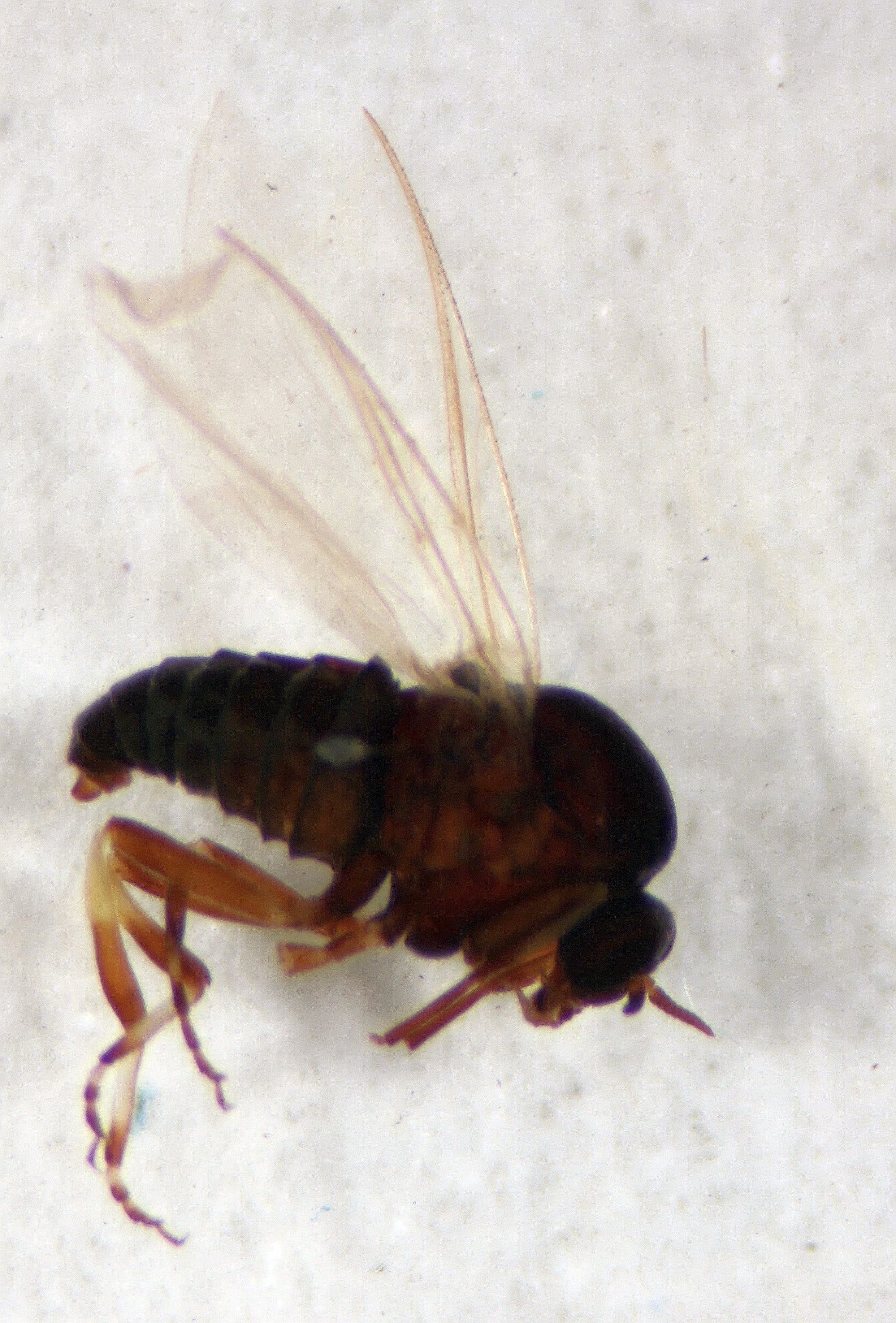
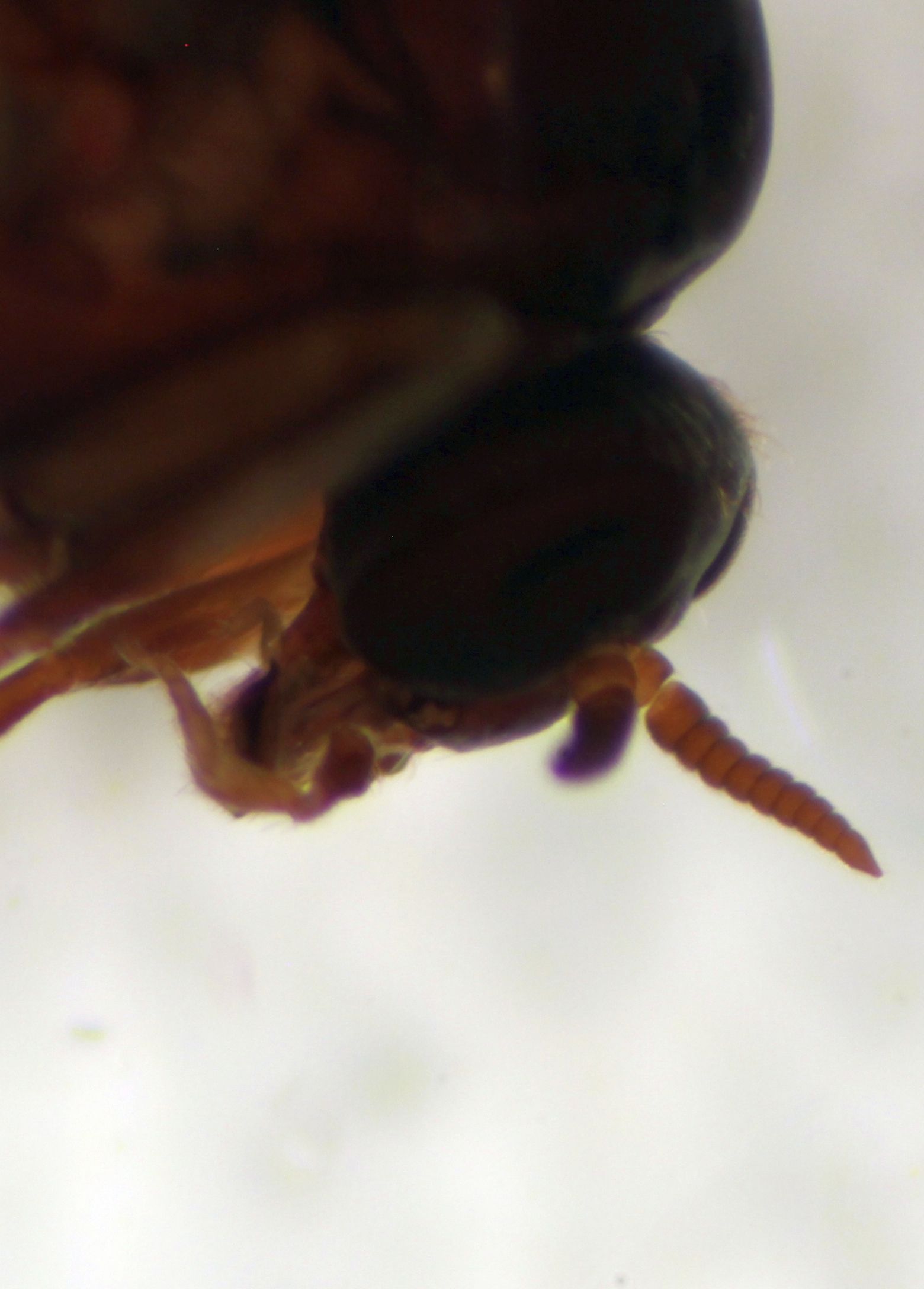
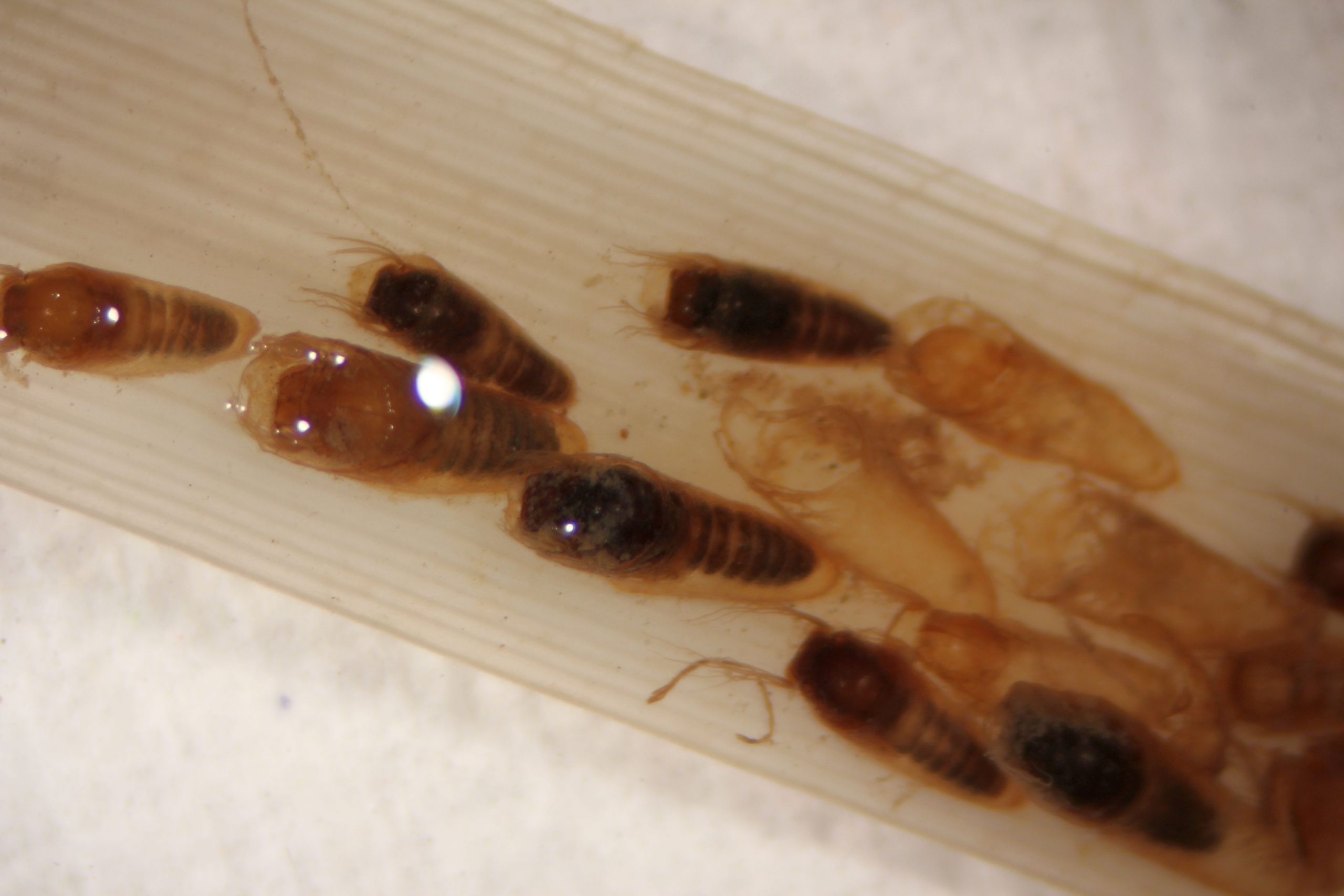
Ceratopogonidae
Ceratopogonidae is yet another family of hematophagous insects. They have several common names, including no-see-ums, sand flies, and biting midges. They are very tiny, and regular window screening is usually insufficient to exclude them from buildings. Like Simuliidae, the adults are pool feeders. Larvae are usually aquatic, but some can even develop in moist or waterlogged soil. Below is one the I recovered from a pitfall trap collection at the Aleza Lake Research Forest. It was likely an incidental capture, having been inadvertently transferred from my hand, which it was attempting to feed on, to the collecting vial!
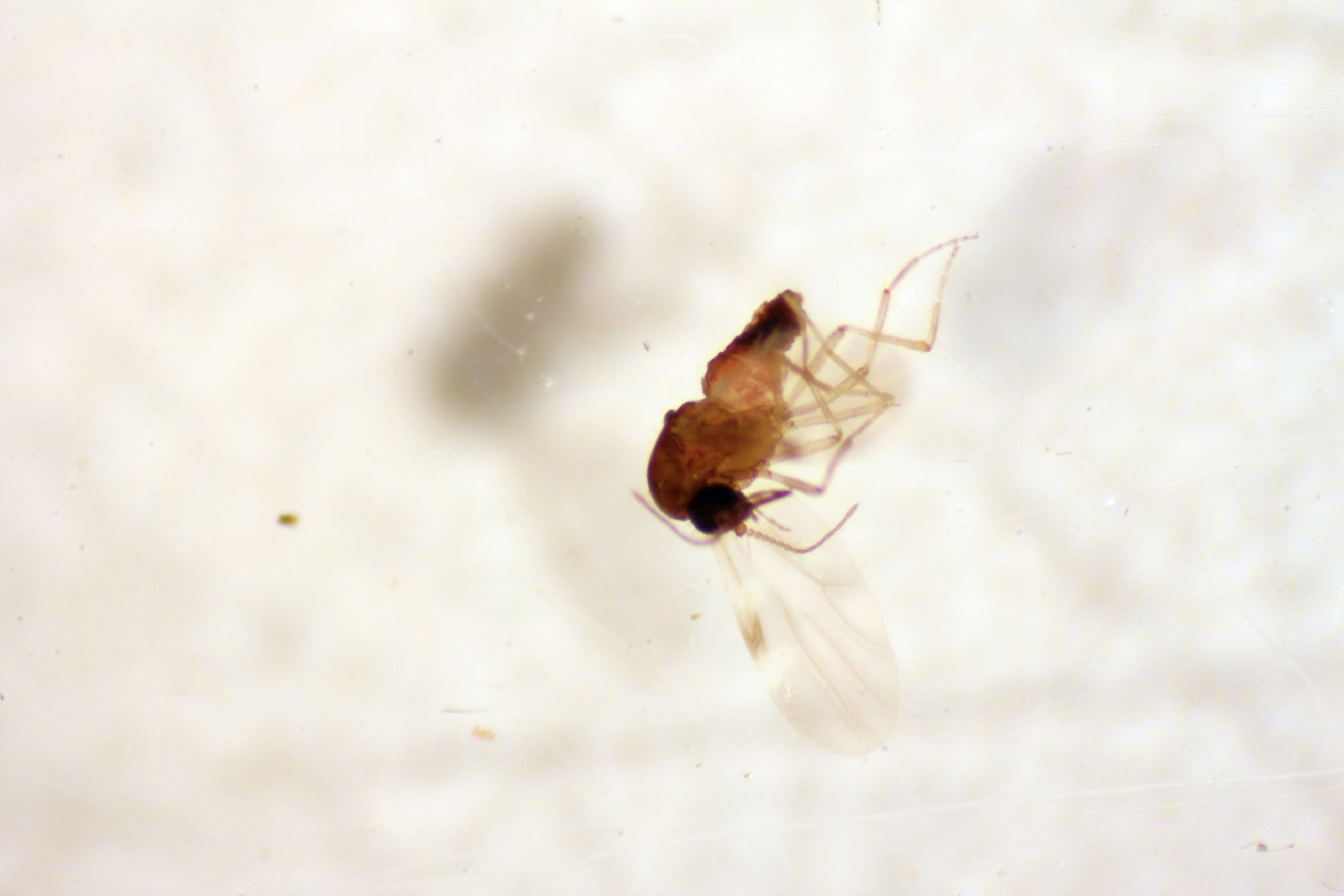
Chironomidae
Chironomidae is a large, diverse family of non-biting midges. They form an important link in aquatic food webs, feeding on detritus and algae and providing food for a wide range of vertebrates and invertebrates. They often emerge synchronously in a very short period of time, resulting in truly impressive “swarms”. Adults look very much like adult mosquitoes, but lack a proboscis. The pronotum also has a distinctive feature, a transverse groove or suture across the rear part, just behind the wings (shown below).
Larvae are aquatic, and can be important bioindicators of water quality. It is essential to identify them to the genus or species level though, and that can be extraordinarily difficult. Some species are indicators of high oxygen content, while others thrive in very low-oxygen water. Some, often called “bloodworms”, even have hemoglobin in the hemolymph, to help bind oxygen in near-anaerobic conditions. These species tend to dominate at the bottoms of lakes, or in marshes.
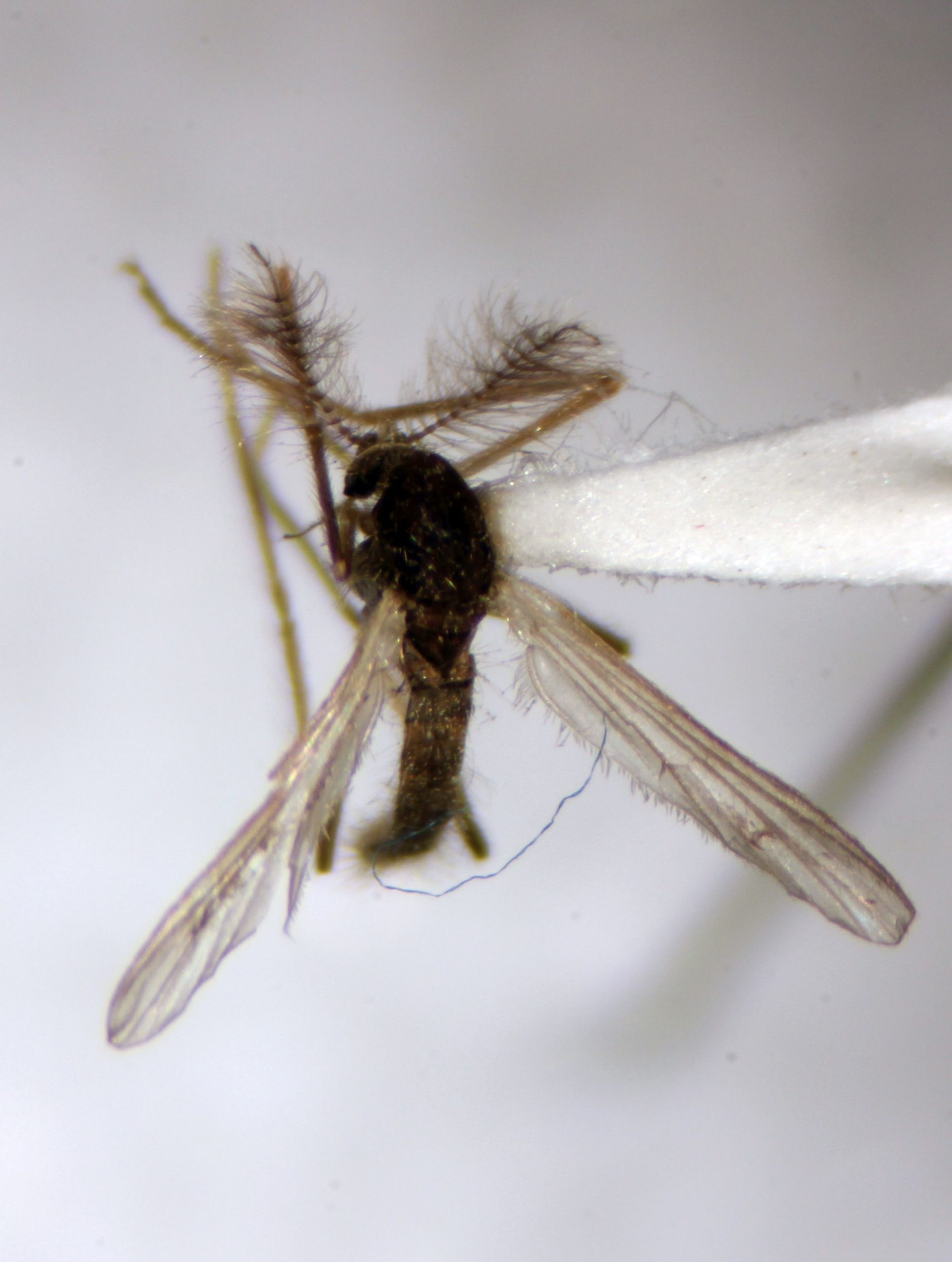
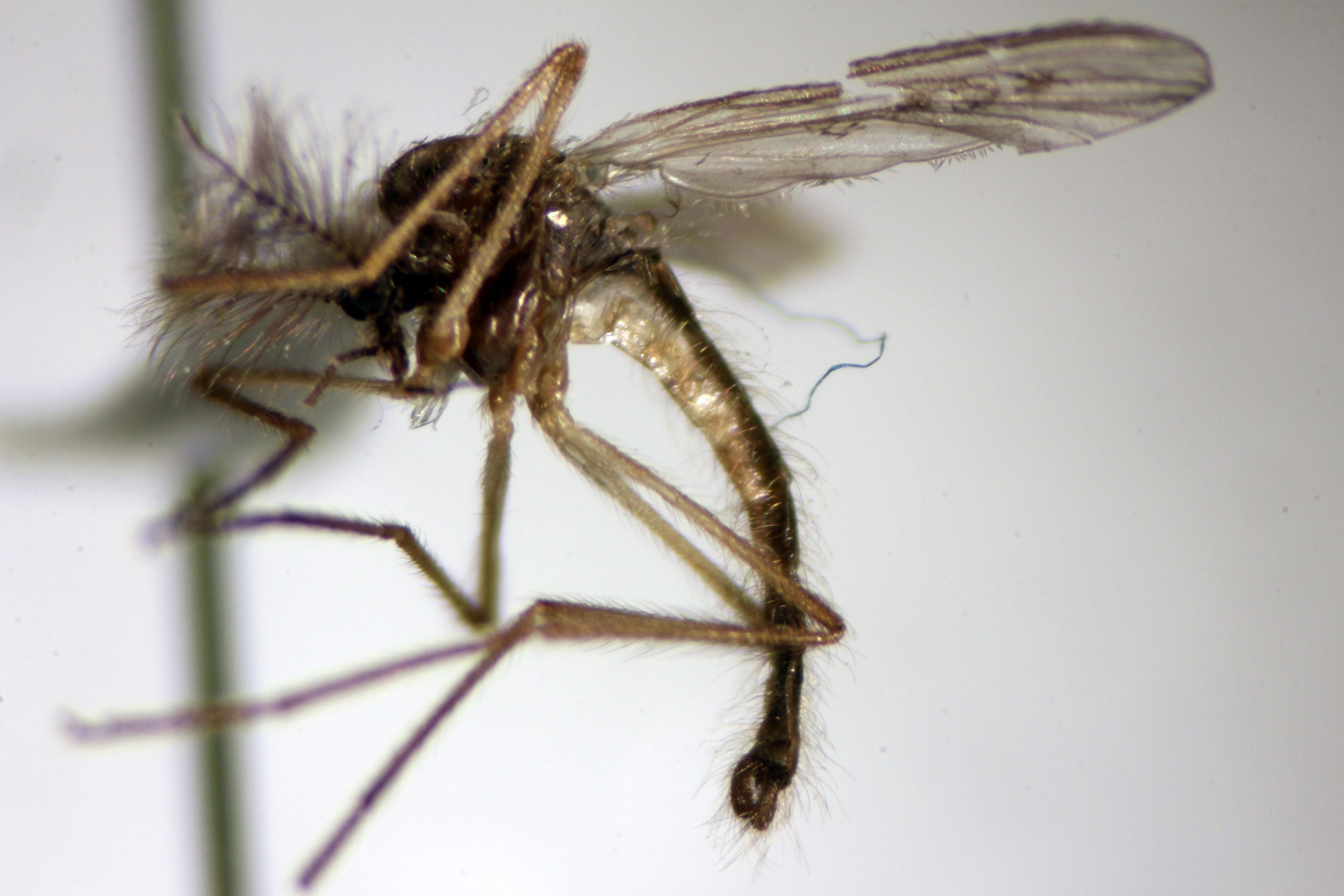
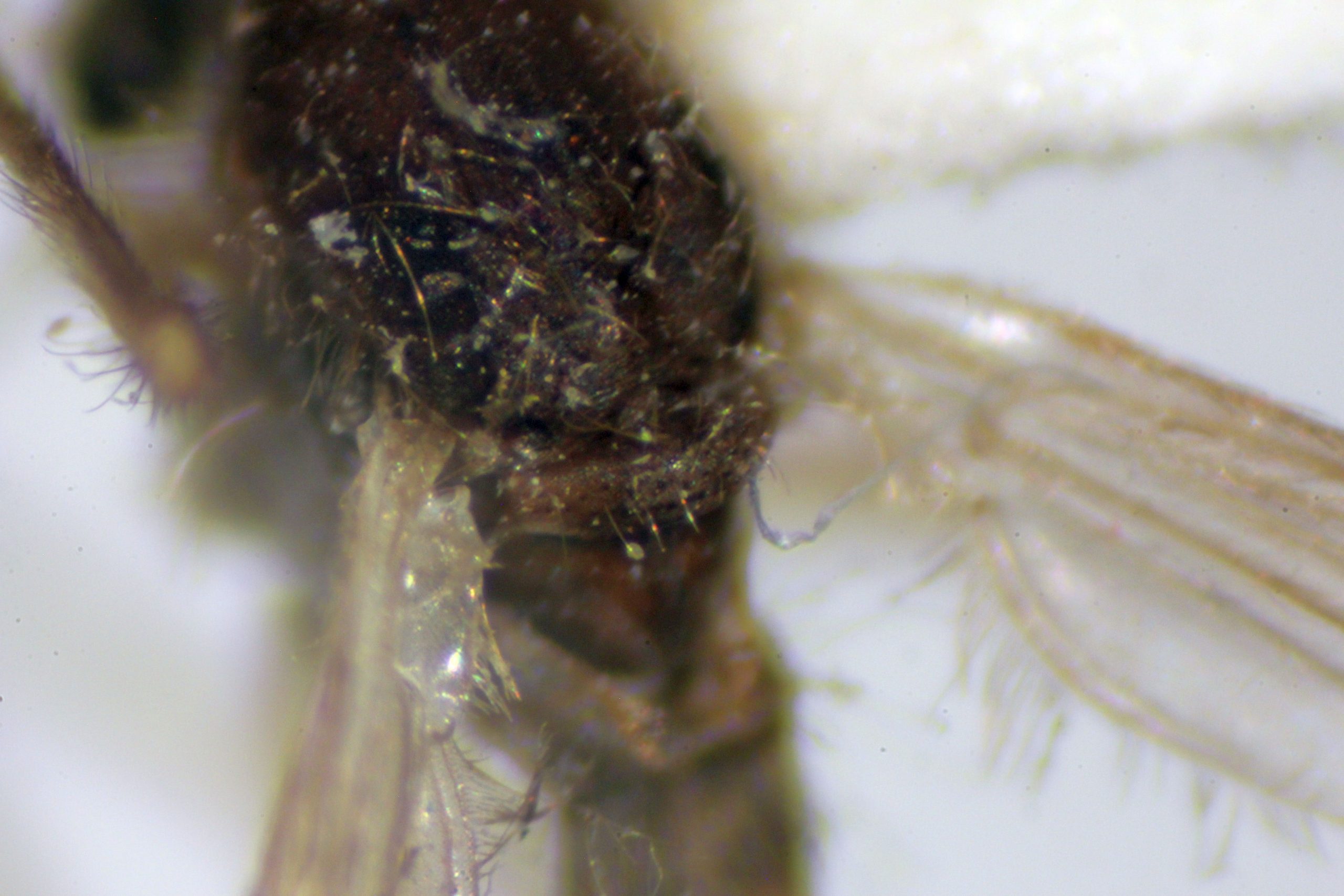
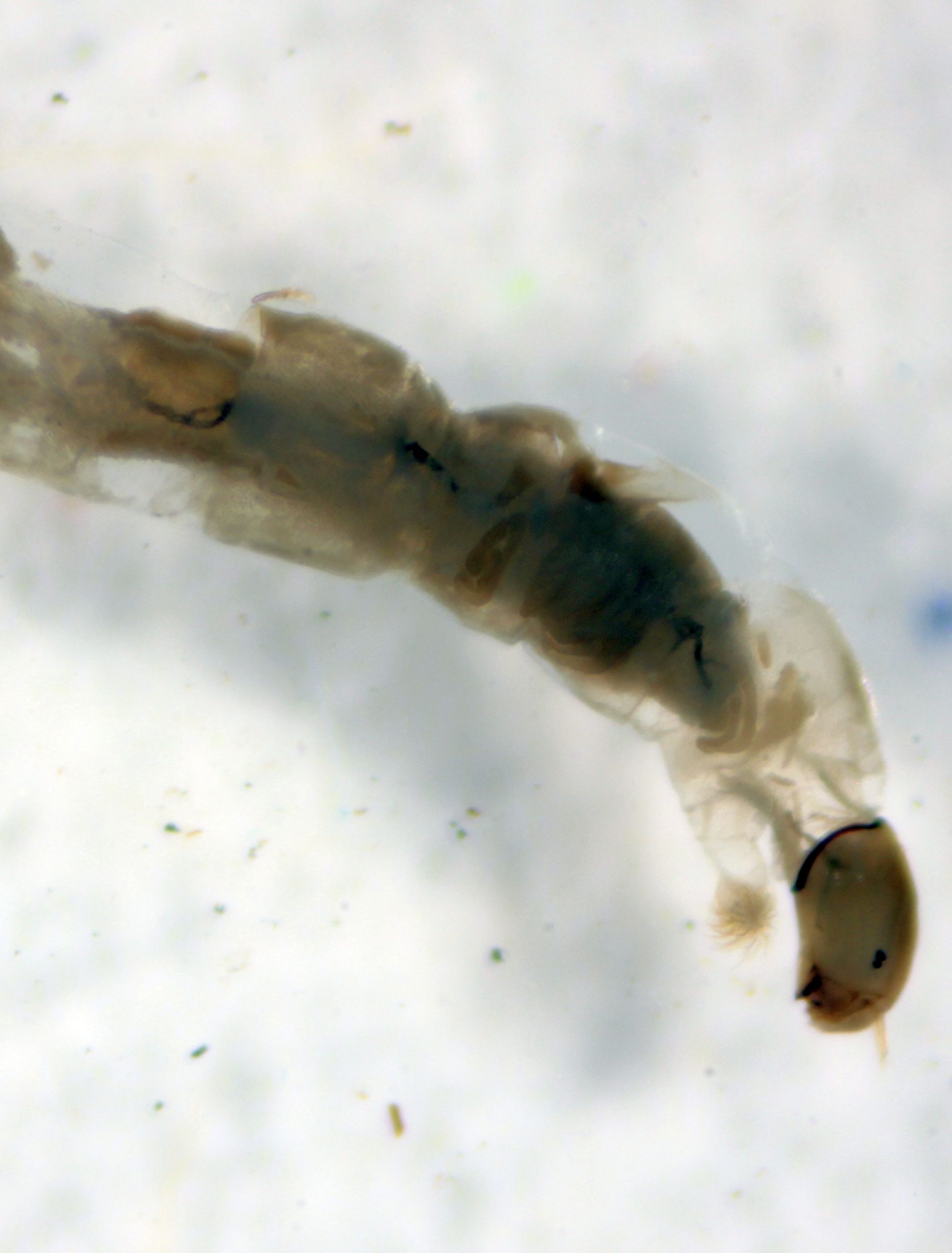


Feedback/Errata